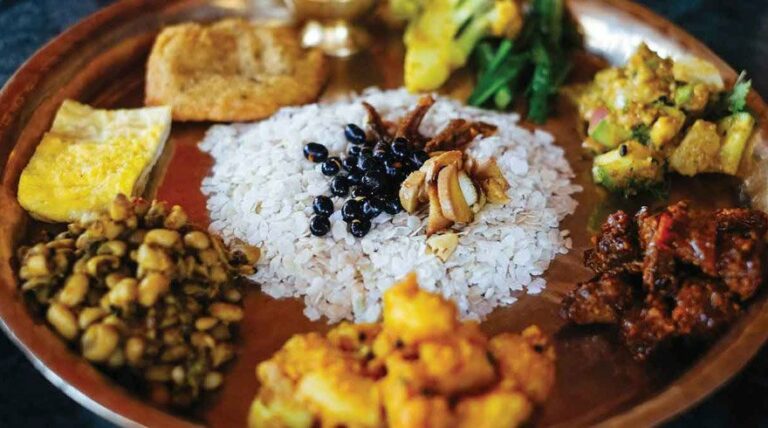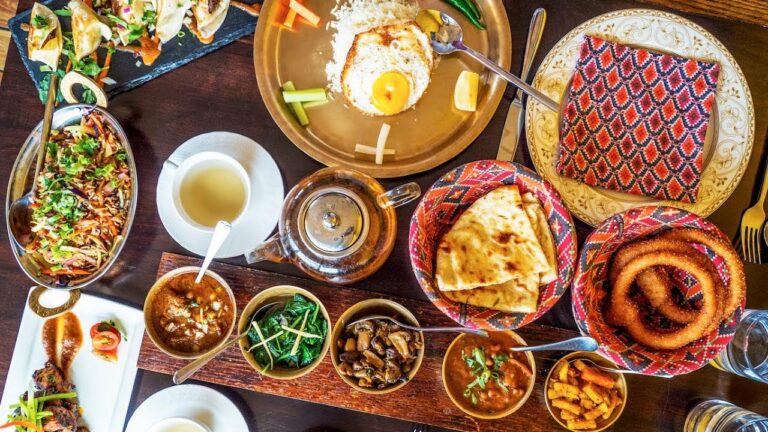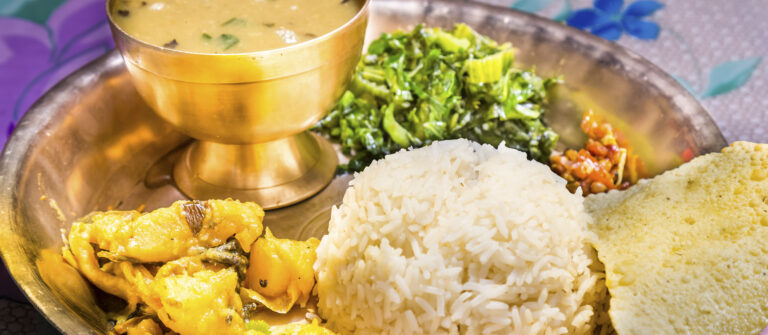Introduction to Nepalese Cuisine
Nepalese cuisine is a delicious mix of indigenous flavors, influenced by Nepal’s geography and culture. It is a unique blend of Indian, Tibetan, and Chinese cuisine, and is known for its hearty dishes and bold flavors. Traditionally, Nepalese cooking emphasizes the use of fresh, locally sourced ingredients, and is heavily influenced by the country’s diverse topography, ranging from high altitudes to low-lying regions. Nepalese cuisine is also characterized by its use of aromatic spices and herbs, which add depth and complexity to the flavors of the dishes.
Flavors and Spices in Nepalese Cooking
Nepalese cuisine is particularly known for its use of spices, which give depth and warmth to the dishes. Some of the most commonly used spices in Nepalese cooking include cumin, coriander, turmeric, ginger, garlic, and chili. The spice mix called masala is also a staple in Nepalese cooking and is used to season curries, soups, and stews. Nepalese cuisine also uses a range of herbs, including bay leaves, curry leaves, fenugreek, and cilantro, to add fragrance and flavor to dishes.
Popular Nepalese Dishes to Try
Nepalese cuisine offers a wide range of dishes that are both flavorful and filling. One of the most famous dishes is momos, a type of dumpling filled with meat or vegetables, and served with a spicy tomato sauce. Another popular dish is dal bhat, a lentil soup served with steamed rice, vegetables, and pickles. Other must-try dishes include chow mein (stir-fried noodles), thukpa (a noodle soup), and aloo tama (a stew made with bamboo shoots and potatoes).
The Role of Dairy in Nepalese Cuisine
Dairy plays an important role in Nepalese cuisine, and it is used in a variety of dishes. Yoghurt, for example, is a staple in Nepalese cooking and is used in curries, chutneys, and marinades. Ghee, or clarified butter, is also commonly used in cooking and is added to rice, dal, and other dishes to give them a rich, buttery flavor. Paneer, a type of Indian cheese, is also popular in Nepalese cooking and is used in curries and stir-fries.
Influence of Geography and Culture on Nepalese Food
Nepalese cuisine is heavily influenced by the country’s geography and culture. The mountainous terrain of Nepal, for example, means that the cuisine is rich in hearty, warming dishes that are perfect for cold weather. The cuisine is also influenced by the country’s diverse ethnic groups, each of which has its own unique culinary traditions. Nepalese cuisine is particularly influenced by the cuisine of Tibet, which is reflected in its use of momos and other dumplings.
Conclusion: Diversity and Deliciousness in Nepalese Cuisine
Nepalese cuisine is a delicious and diverse mix of flavors, influenced by the country’s geography and culture. From hearty stews to spicy curries, Nepalese cuisine offers something for everyone. Whether you are a meat lover or a vegetarian, there is no shortage of delicious dishes to try. So the next time you’re looking for something new to try, be sure to give Nepalese cuisine a chance – you won’t be disappointed!



